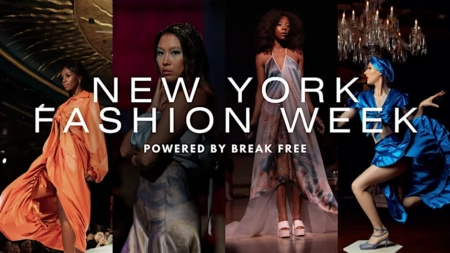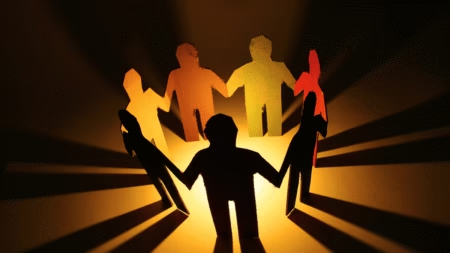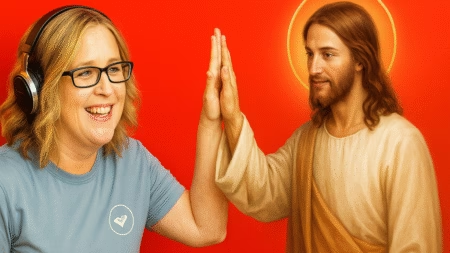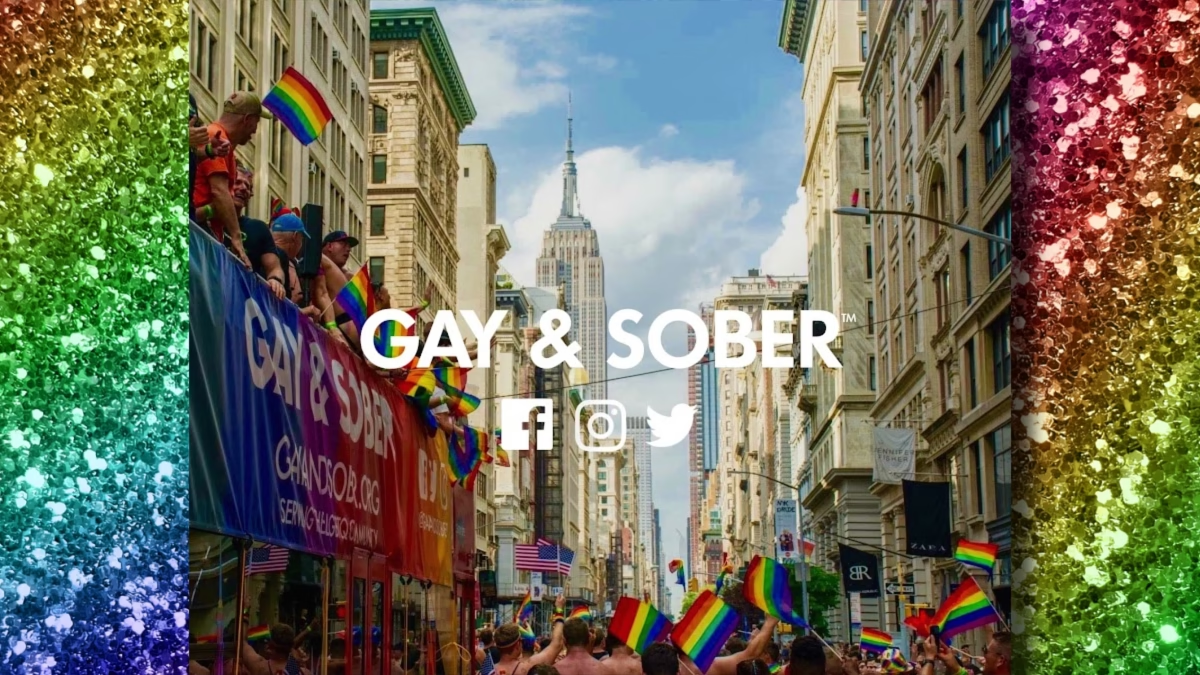
Pride means different things to different people. For some, it’s a time to dance. For some, it’s a time to protest. When we think about Pride parties, oftentimes images of people getting together and drinking and partying till sunrise come to mind. Some people can handle their drinking and drugging, and some simply can’t or don’t want to partake.
According to a study by the National Institute of Health, up to one-third of gay men and two-thirds of lesbians admitted to having drinking problems. In the trans community, these figures are even higher. First, LGB communities historically have been centered on activities that involve drinking and drug use (e.g. bars, circuit parties). Second, expectancies about drinking/drug use and the perceived normality of use in LGB communities could increase the likelihood of LGB individuals deciding to drink heavily or use drugs. Finally, the additional stress related to being a sexual minority can contribute to elevated substance use. Opinions vary, but many mental health professionals agree that the pandemic only exacerbated the problem and served as a “perfect storm” for the health crisis of alcohol and drug use within the queer community.
What’s the point?
Let’s get this out of the way … the point of this article is not “anti-alcohol” or “anti-drugs”. If you are someone who can easily take a drink or a drug without negative repercussions, then our hats are off to you. Enjoy and party on! The point of this writing is to shed light on a pervasive problem within the queer community. It’s also to celebrate and recognize that there is a growing segment within our community choosing to live their lives sober or in recovery — and they still insist on having a great time, even during Pride!
Sober beginnings…
In 2009, a group of young gay men in Manhattan were getting sober. This was also during a time when crystal meth use and chemsex were exploding in New York and other areas. These people were raised in the ‘90s and early 2000s. For them, if they wanted to socialize, find friends, hook up or maybe even meet a boyfriend, they were used to going to a gay bar or nightclub. That seemed to be the norm in queer culture. And let’s not forget, the entire fight for LGBTQ equality started at the Stonewall Inn — a neighborhood gay bar in the West Village. There’s no denying that when it comes to socializing the queer community, most of the time, it’s centered around alcohol.
It was Pride weekend in New York City in the summer of 2009. This group of young gay men in recovery were looking to have some fun. They knew about the big Pier Dance and decided to instead go to the local gay AA sober dance that was being held in a church basement on Christopher Street. They showed up expecting a fun time. What they found was a dark, mostly empty basement with a disco ball and a few people dancing. They looked at one another and said, “Is this all there is for us?” Being disappointed, they left and went to the Hudson River to watch the Pride fireworks. While there, they saw the Empire State Building lit up in rainbow colors, and one of them said to the others, “This is New York City. There are lots of us that are sober. Why isn’t there something big and fun for us to go to?” The conversation continued the next time they saw each other, and they put their heads together — and eventually put their wallets together — to host a party the following year.
On April 1, 2010, they announced to their friends in the local gay recovery groups and on the rather new platform called Facebook that on June 24 they were hosting a free and fun sober party. They jokingly said the party “was retribution for every bad AA dance they’d ever been to.” They slapped on a sexy theme of the Wild West and expected maybe 50 people. Over 300 people showed up. The night had go-go cowboys dancing, lots of Red Bull, beef jerky flown in from Texas, and even the cops showed up because the music was too loud — always the sign of a good party. That’s the night that they realized they were on to something and that there was an audience for it.

If you build it, will they come? (And will they pay?)
The real questions for these ambitious organizers were twofold: Would people come from outside New York for it, and would people pay for it? They planned their first three-day event to coincide with Pride weekend of 2011. They chose to do it then because it just made sense to do it on a weekend that is usually filled with a lot of alcohol- and drug-fueled parties. with big Pride events sponsored by big alcohol. On top of that, they knew lots of people in recovery relapsed on Pride weekend. So that weekend was chosen to offer the community an alternative — fun, over-the-top and memorable.
That small sober Pride event in the summer of 2010 has grown into an annual four-day affair during Pride weekend in NYC. It now has sister events in Amsterdam, Fire Island and Tennessee, and London is in the works! The first time the group hosted the party, they rented a New York sightseeing cruise ship for their dance party. The ship sailed around the sights like the Statue of Liberty while the attendees danced like crazy. The sales of Red Bull that night were off the charts. At one point, the ship sailed past the Pier Dance where Madonna was performing. The pride fireworks gave everyone a show, and people continued the revelry. Upon disembarking, one of the participants said, “Tonight is what I was hoping for. For the first time in my sobriety, I had the feeling that I wasn’t missing out. Thanks for bringing the party!”

Turns out it does “work if you work it”
Year after year, the event grew and grew, attracting people from all over the world and from all different backgrounds. It is estimated that 80% of their attendees come from a 12-step recovery background, 10% identify as “sober lifestyle” and 10% are allies and loved ones. As the event continued to grow, several questions arose. Who’d be in charge? How would it be paid for? How would they balance health and wellness programming with fun? And finally, how much party is too much party?
Gay & Sober is now the parent nonprofit of the event and has hosted sister events in Amsterdam, Fire Island, Dollywood in Tennessee, and a London experience is in development. At the helm of the organization is the visionary — and sometimes controversial — Christian Parker. In a recent interview with A&E, Parker said, “I wanted to bring something new, different and exciting to the sober community. I was tired of the same old cheesy thing. I don’t think sober queers want to be relegated to low-energy sober dances in church basements.” — a remark that irritated other AAers putting on sober events elsewhere. Christian Parker went on to say “I’m proud that we pushed and fought against the status quo. I’m proud that the team put the word out despite pushback and incredible pessimism.”
Doing an event in midtown Manhattan comes at a high price. The organization understood that most people early in their recovery journey had financial wreckage from active addiction. So the team made sure that plenty of scholarships were made available to newcomers. They knew that tickets would only cover a fraction of the costs, so they opened up to sponsors by LGBTQ-affirming treatment centers and coffee and alcohol-free beverage companies. They also have a thriving merchandise division that adds to the revenue stream. Their donors — some sober, some gay and even some straight — also get a nice tax deduction at the end of the year.

#SOBERNOTBORING
Gay & Sober fully believes that a sober life can be a fun life. They think 12-step meetings are great, but they can only do so much. If a person starts to get bored, lonely or think they’ll never have fun again, they often return to active drinking or drug use. So everything the organization does counters that age-old dilemma of how to really live sober. But how much fun is too much fun? Several crotchety old-timers in AA criticized the parties and said they were nothing but sober circuit parties. They said things like “Go-go boys shouldn’t be at a sober dance party.” The team took the feedback, remembered all the people raving on the dance floor and decided to do it anyway. There’s no question there is a sexually charged hookup vibe at all the events. That vibe can be triggering to some former meth users. To balance that, the organization sponsors programming on topics such as sexuality in recovery, dating in sobriety, meditation and other recovery-related health and wellness workshops — all led by experts in their field.
Past keynote speakers at the annual conference have included Dr. Alan Downs, author of “The Velvet Rage”; Democratic presidential candidate and author Marianne Williamson; and fashion designer Marc Jacobs. Past entertainers have been Fortune Feimster, Sandra Bernhard, Bianca Del Rio and Matteo Lane. People who have attended the events say things like, “It’s the best recovery event I’ve ever been to” or “It changed my life and showed me how fabulous a sober life can be.” Every Pride Sunday, the contingent marches in the NYC Pride Parade behind the Gay & Sober banner. When the crowds see the Gay & Sober contingent, two things happen: People applaud, and seeing hundreds of LGBTQ and sober people proudly marching together helps break down the stigma of addiction, alcoholism and, better yet, getting help.
Thomas Day, the current event chair, said: “When I first came to this organization in 2023, I didn’t know a single person. I walked in uncertain, but hopeful — looking for a space where I could belong. I don’t follow the traditional 12-step model, and I wasn’t sure if that would be accepted. But what I found here was something meaningful: a community that saw me, supported me and allowed me to grow in recovery on my own terms. That experience changed my life — and it’s why I’m here today. While my path to sobriety isn’t like many others, it has included deep personal work, connection and accountability. Recovery looks different for everyone, and that’s not only okay — it’s something we ought to hold space for.
“As chair, my vision for this nonprofit is to fully embrace the direction of inclusivity. We need to start somewhere, and that somewhere is right here, with each of us choosing to be welcoming to all members of the LGBTQIA+ community in recovery, no matter what path they’re on. This past year we made a decision to reflect the world that we’re doing business in. We made a decision to open the doors of our conference (which used to be all gay men) to all members of the recovery community. Together, we can build a future where every person feels seen, valued and supported.”

In 2025, 16 years after that experimental sober dance, Heritage of Pride announced that Gay & Sober would produce their first sober event as part of the NYC Pride official lineup, the Dance on the River. The cruise is a sober dance party with all the lights and action where all LGBTQ people who are sober — or who want to party in an alcohol- and drug-free space — can have fun.
The announcement was historic because, for the first time ever, there will be an alcohol- and drug-free NYC Pride event for adults. Kevin Kilbride, NYC Pride media and marketing manager, said: “We work hard to ensure our events reflect the diversity and vibrancy of our city’s entire queer community, and that includes sober folks and their allies.” Since its inception in 1984, Heritage of Pride/NYC Pride has led the way for LGBTQIA+ people and how they celebrate Pride.
The momentous decision spoke to the need for sober and safe spaces for members of the LGBTQ community who are either in recovery from alcoholism and drug addiction or simply want to have fun and enjoy a healthy life without drugs and alcohol. This New York event happens on the last Sunday in June and is another way to redefine, celebrate — and reclaim — Pride.
Gay & Sober marches on with its community work and is out and about doing its special niche thing. They realize that addiction is a very dark subject, so what they do, year after year, event after event, is bring a little light to that dark.
Written by Mario Moreno and Thomas Day with Christian Parker as a contributor.

COMING OUT SOBER: shares’ personal stories from our Sober Curator contributors in the LGBTQ+ community about living sober, proud, and out loud. From hilarious mishaps to heartbreaking truths—and everything in between—these narratives explore what it means to break free from both booze and societal norms. This space celebrates authenticity, resilience, and the power of living your truth without alcohol.
Don’t miss our LGBTQ+ Recovery Resource Guide for supportive tools, connections, and inspiration.
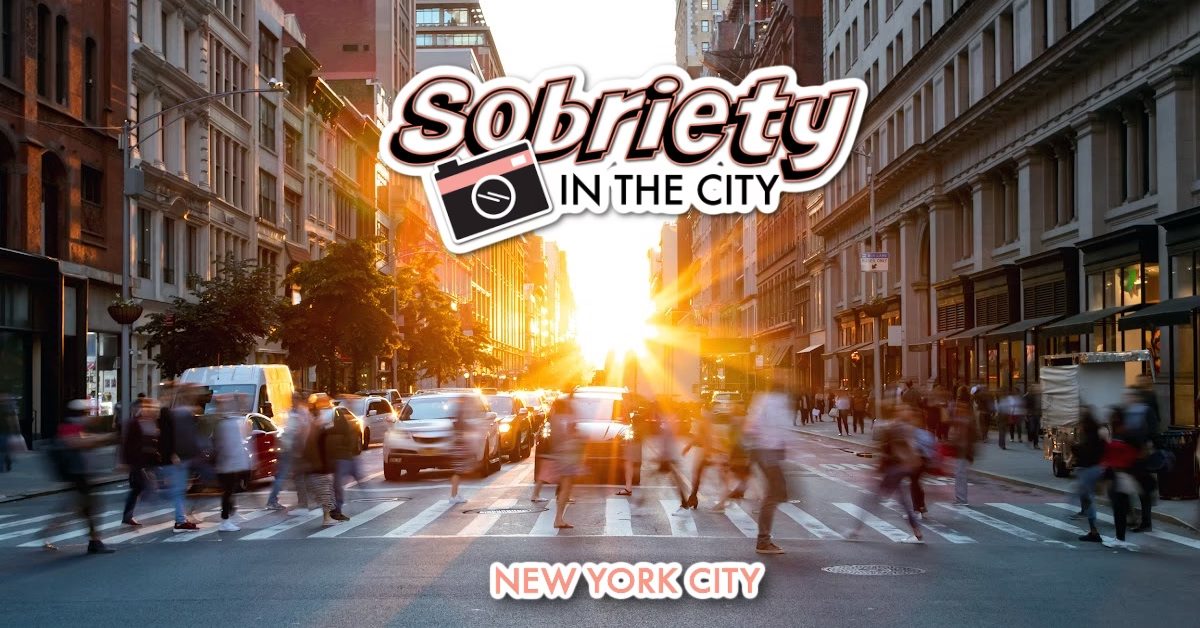
SOBER IN NYC at The Sober Curator is your insider pass to New York City’s thriving zero-proof and sober-curious scene—where alcohol-free living is as iconic as the skyline. From trendy NA bottle shops to recovery game nights with the Yankees or Knicks, we spotlight the city’s best venues, events, and experiences that prove sobriety can be just as vibrant (and stylish) as any night out.
Whether you’re a lifelong New Yorker, a visitor, or somewhere in between, you’re welcome to raise your glass—minus the booze—and join a community that’s shaking up social norms while making wellness the latest trend.
Have an NYC-based event, product, restaurant, or story to share? Email thesobercurator@gmail.com or DM us on social media—we’d love to feature it.

Help is Available
Addressing the intersection of LGBTQ+ identity and substance use requires a multifaceted approach that acknowledges the unique challenges faced by this community. By advocating for inclusivity and expanding resources, we can create recovery environments where all individuals, regardless of sexual orientation or gender identity, can find support and healing. Click Here for a list of LGBTQ+ Recovery Resources.




